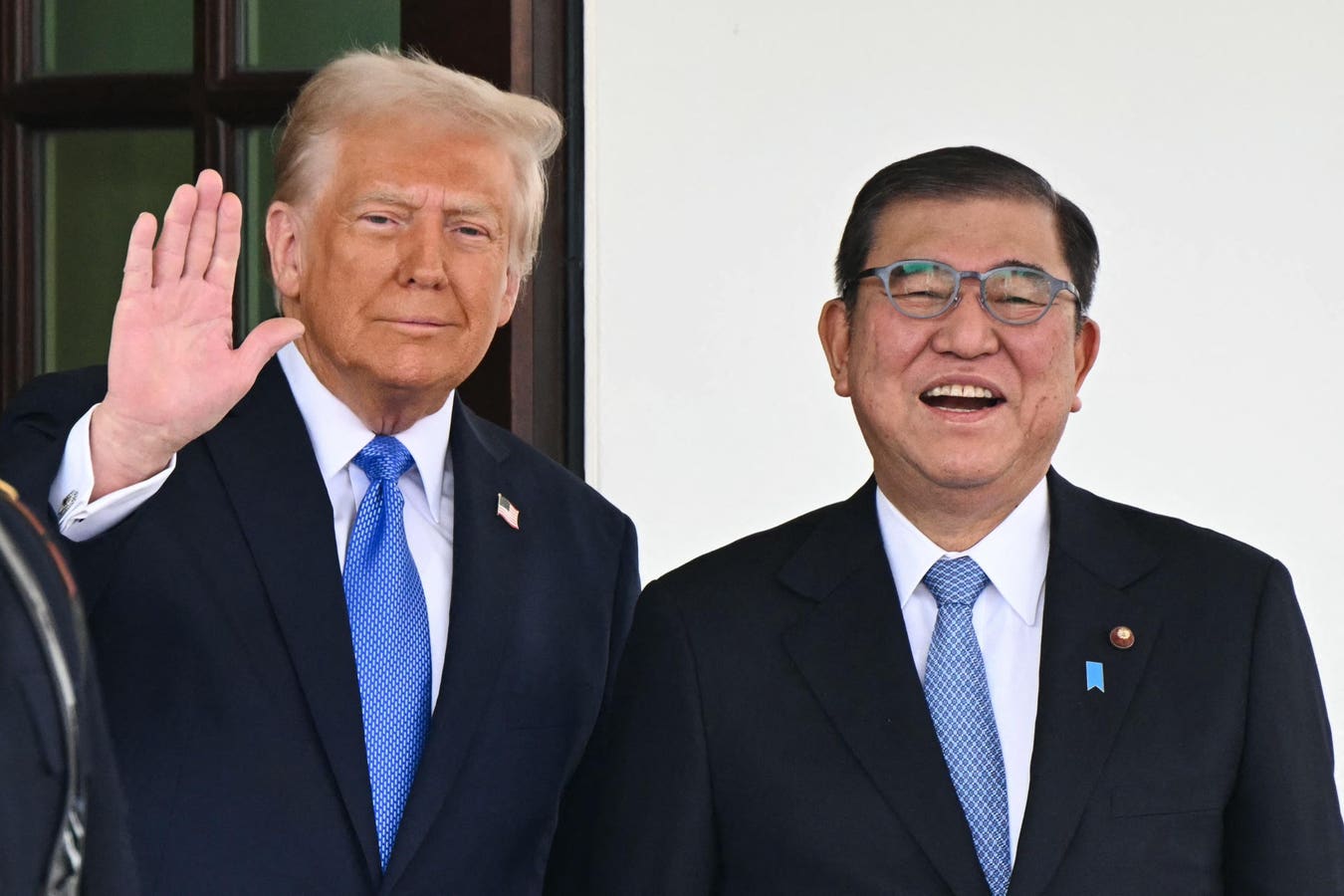Topline
The U.S. and Japan have reached a trade agreement under which the longtime U.S. will face a 15% tariff—down from a previously threatened 25%—President Donald Trump announced on Tuesday, as Japan’s Prime Minister hailed the move as a “new golden era” in the relationship between the two countries.
US President Donald Trump waves as he greets Japanese Prime Minister Shigeru Ishiba upon arrival … More
Key Facts
The 25% tariff rate slated to hit Japan by August will be lowered to 15%, Trum announced in a Truth Social post, adding that Japan will invest $550 billion into the U.S. under the deal.
Trump added Japan would “open their Country to Trade including Cars and Trucks, Rice and certain other Agricultural Products, and other things.”
In a follow up post, Trump said his administration worked long and hard on the deal which he claimed is the “largest TRADE DEAL in history with Japan.”
In a statement made on X, Japanese Prime Minister Shigeru Ishiba said the trade deal was made with the goal of “prioritizing investment over tariffs.”
The statement added that the deal will herald a “new Golden Era for Japan and the U.S.”
Get Forbes Breaking News Text Alerts: We’re launching text message alerts so you’ll always know the biggest stories shaping the day’s headlines. Text “Alerts” to (201) 335-0739 or sign up here.
How Have Japanese Stocks Responded?
The Tokyo Stock Exchange’s benchmark Nikkei 225 index surged after Trump’s announcement and ended the day up 3.51% at 41,171.32 points. The upswing in Japanese stocks was led by the country’s top automakers with Toyota’s stock price soaring by 14.34% to $19.43 (JPY 2,854) while Honda rose 11.15% to $11.23 (JPY 1,650).
Chief Critic
The lowered tariffs deal came under criticism from a group representing to U.S. automakers, including GM, Ford and Chrysler’s parent company Stellantis. Matt Blunt, the head of the American Automotive Policy Council told Reuters: “Any deal that charges a lower tariff for Japanese imports with virtually no U.S. content than the tariff imposed on North American-built vehicles with high U.S. content is a bad deal for U.S. industry and U.S. auto workers.” The group representing the Detroit Big Three had previously criticized the U.S. trade agreement with the U.K., saying: “We are disappointed that the administration prioritized the UK ahead of our North American partners. Under this deal, it will now be cheaper to import a UK vehicle with very little U.S. content than a USMCA compliant vehicle from Mexico or Canada that is half American parts.”
Key Background
Trump threatened a 25% tariff rate against Japan this month as part of a series of letters sent to multiple countries informing them about their respective rates. Trump also threatened Japan with an even higher rate, saying, “If for any reason you decide to raise your Tariffs, then, whatever the number you choose to raise them by, will be added onto the 25% that we charge.” The president has repeatedly defended his tariff policies since unveiling rates in April, raising the ire of longtime trading partners and alarming experts who say the levies will raise consumer prices. A recent Yale University analysis published before the news of the Japan trade deal found Trump’s tariff policy could cost U.S. households an additional $2,400 this year if new copper and foreign goods tariffs become effective and stay in place.
Further Reading
Trump’s New Tariffs Could Cost Households $2,400 This Year, Analysis Finds (Forbes)


